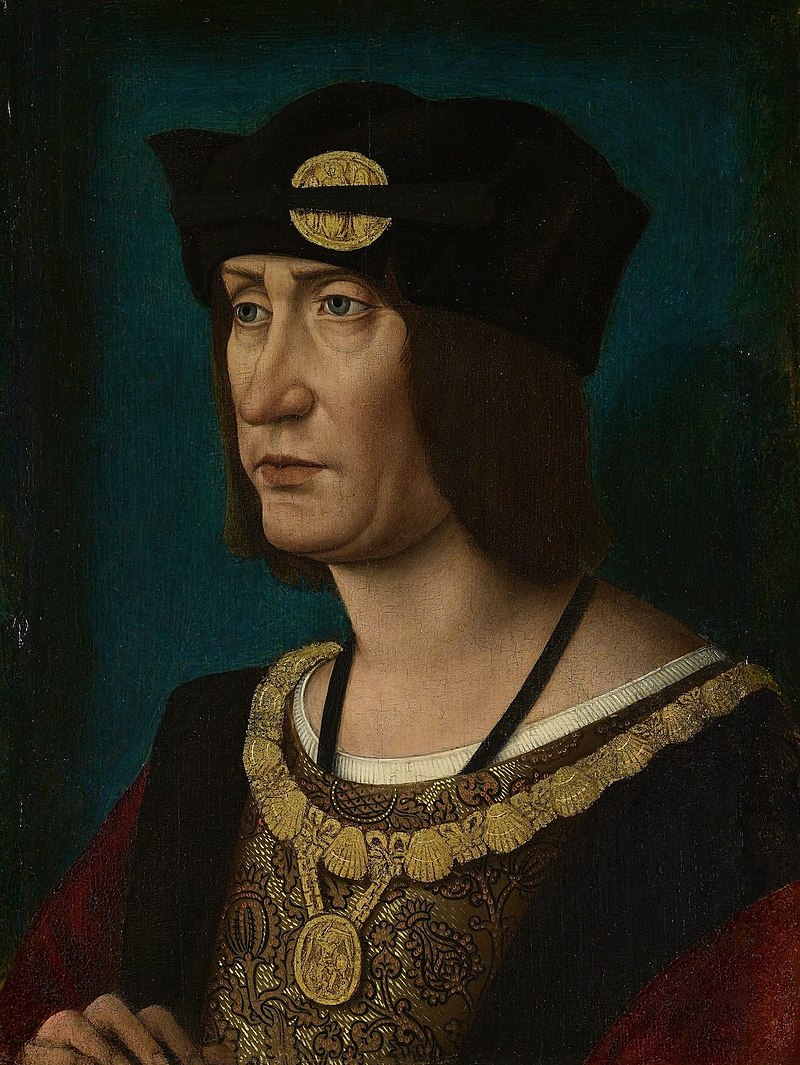by Susan Flantzer © Unofficial Royalty 2017

Edward of Westminster, Prince of Wales; 18th-century engraving; Credit – Wikipedia
Edward of Westminster was one of the seven Princes of Wales who never became King. The others are:
-
- Edward of Woodstock (the Black Prince), predeceased his father King Edward III
- Edward of Middleham, predeceased his father King Richard III, two years later, his father lost his crown and his life at the Battle of Bosworth Field
- Arthur Tudor, predeceased his father King Henry VII
- Henry Frederick Stuart, predeceased his father King James I
- James Francis Edward Stuart, his father King James II was deposed
- Frederick Louis, predeceased his father King George II
Edward of Westminster was born on October 13, 1453, at the Palace of Westminster in London. He was the only child of King Henry VI of England and Margaret of Anjou. In 1454, Edward was created Prince of Wales.
Shortly before his son was born, Henry VI had some kind of mental breakdown. He was unable to recognize or respond to people for over a year. These attacks may have been hereditary. Henry’s maternal grandfather, King Charles VI, suffered similar attacks, thinking he was made of glass. Sometimes Henry had hallucinations, which makes some modern medical experts think he may have had a form of schizophrenia. Porphyria, which may have afflicted King George III, has also been suggested as a cause. During Henry VI’s incapacity, Richard Plantagenet, 3rd Duke of York, the next in line to the throne after Henry V’s son, governed as Lord Protector.
Even before Edward’s birth, factions were forming, and the seeds of the Wars of the Roses were being planted. Edward’s mother, Margaret of Anjou, was an intelligent, energetic woman and realized she would have to take on most of her husband’s duties. She aligned herself with Edmund Beaufort, 2nd Duke of Somerset. Margaret believed her husband was threatened with being deposed by Richard Plantagenet, 3rd Duke of York, who thought he had a better claim to the throne and would be a better king than Henry. After Henry’s recovery in 1455, the Duke of York was dismissed, and Margaret and the Duke of Somerset became all-powerful. Eventually, things came to a head between the Lancastrians and the Yorkists, and war broke out.
At the First Battle of St. Albans on May 22, 1455, the Duke of Somerset was killed. Afterward, there was peace, but hostilities started again four years later. On July 10, 1460, Henry VI was captured at the Battle of Northampton and forced to recognize the Duke of York as his heir instead of his own son. Margaret rallied the Lancastrian forces and was victorious at the Battle of Wakefield on December 29, 1460. Richard Plantagenet, 3rd Duke of York and his second son Edmund, Earl of Rutland were both killed in the battle.
The leader of the Yorkists was now the late Duke of York’s eldest son Edward, Earl of March, the future King Edward IV. During the Second Battle of St. Albans on February 17, 1461, Henry VI’s freedom was secured, and it is alleged that he laughed and sang insanely throughout the battle. The Yorkists regained the upper hand at the Battle of Towton on March 29, 1461, when Edward, Earl of March defeated the Lancastrian forces in a snowstorm. Henry fled to Scotland, and England had a new king, as Edward, Earl of March became King Edward IV from the House of York.
Henry VI returned from Scotland in 1464 and participated in an ineffective uprising. In 1465, Henry was captured and taken to the Tower of London. His wife Margaret, exiled in France, wanted to restore the throne to her husband. Coincidentally, King Edward IV had a falling out with his major supporters, his brother George, Duke of Clarence and Richard Neville, 16th Earl of Warwick, known as the Kingmaker. Margaret, Clarence, and Warwick formed an alliance at the urging of King Louis XI of France. Edward IV was forced into exile, and Henry VI was restored to the throne on October 30, 1470.
Margaret of Anjou was suspicious of Warwick, and to ease her suspicions, Warwick betrothed his daughter Lady Anne Neville to Edward, Prince of Wales. On December 13, 1470, 17-year-old Edward and 14-year-old Anne were married in Angers Cathedral in France, and Anne became Princess of Wales. It is suspected that the marriage was never consummated.
However, once again, Edward IV got the upper hand. Edward IV returned to England in early 1471 and killed Warwick at the Battle of Barnet. The final decisive Yorkist victory was at the Battle of Tewkesbury on May 4, 1471, where Margaret led the Lancastrian forces, and her son Edward, Prince of Wales was killed. The only Prince of Wales to be killed in battle, he was buried at Tewkesbury Abbey, where a plaque on the floor in the center of the sanctuary marks his grave. The plaque has an inscription in Latin, translated into English says: “Here lies Edward, Prince of Wales, cruelly slain whilst but a youth. Anno Domini 1471, May 4th. Alas, the savagery of men. Thou art the sole light of thy Mother, and the last hope of thy race.”

Plaque marking the grave of Edward of Westminster, Prince of Wales; Credit – www.susanhigginbotham.com
Henry VI was returned to the Tower of London and died on May 21, 1471, probably murdered on orders from Edward IV. Edward, Prince of Wales’ widow Anne Neville married Edward IV’s brother Richard, Duke of Gloucester, who eventually succeeded to the throne as King Richard III in 1483.
This article is the intellectual property of Unofficial Royalty and is NOT TO BE COPIED, EDITED, OR POSTED IN ANY FORM ON ANOTHER WEBSITE under any circumstances. It is permissible to use a link that directs to Unofficial Royalty.














